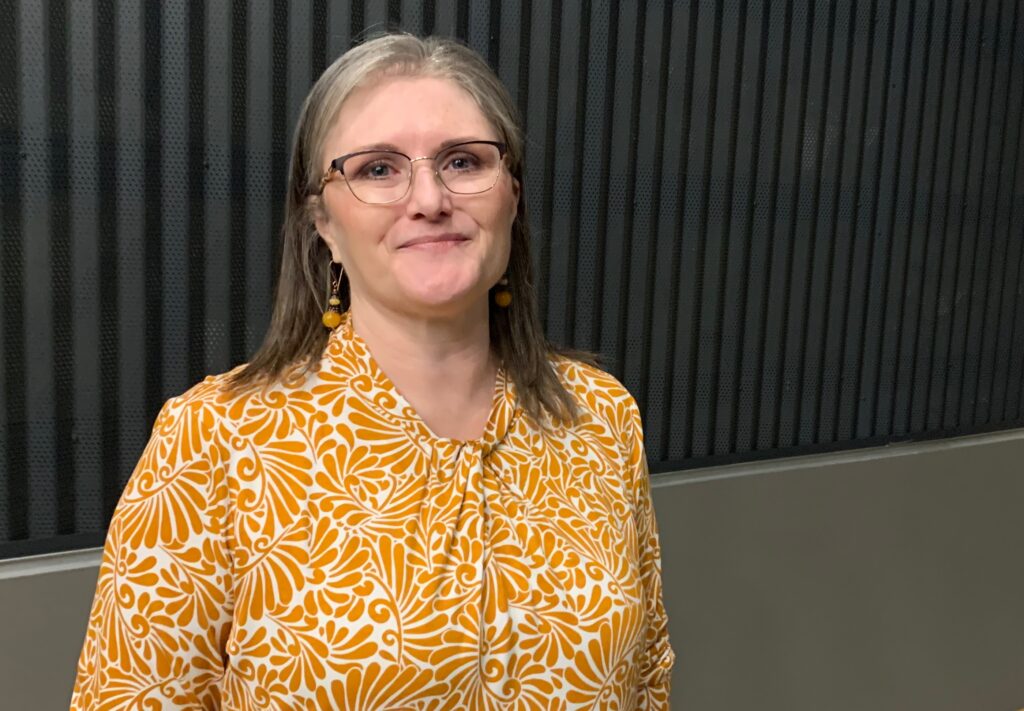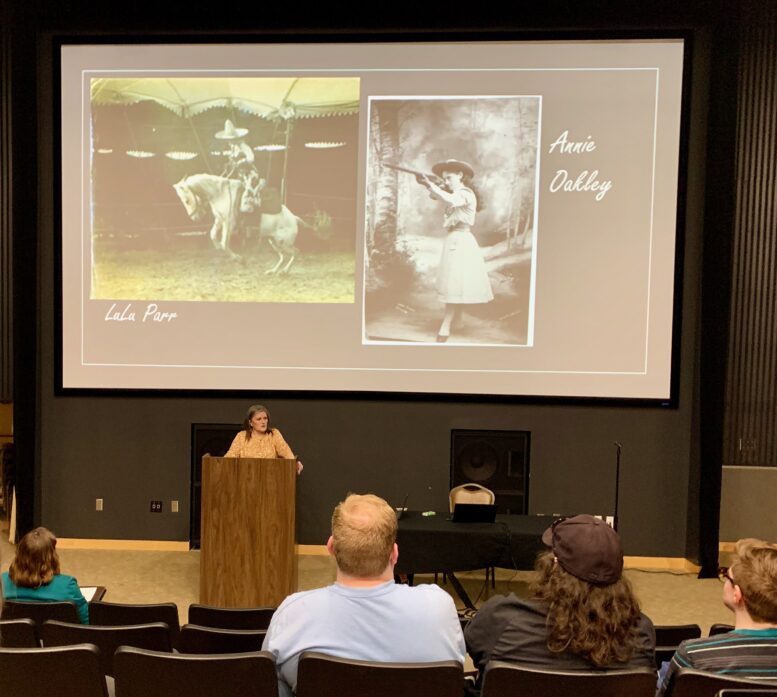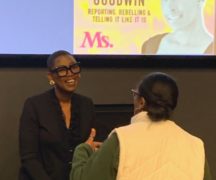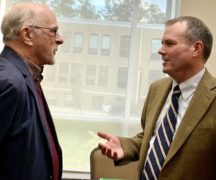By JULIE CARLE
BG Independent News
Cowgirls and ranching women in the West challenged gender norms and were vital contributors to activism, athleticism and fashion; however, their contributions to women’s history have long been overlooked or forgotten.
“Most women in rural settings have done a lot more to contribute to women’s history than what we’ve looked at in the past,” said Tracey Hanshew, assistant professor of history at Eastern Oregon University, during a recent Women’s History Month talk at Bowling Green State University. They did so in their own way and didn’t subscribe to the traditional tactics of Eastern suffragettes.
Hanshew grew up on a Texas ranch where her dad rodeoed, and she helped move cattle from pasture to pasture. Because of her background, she was naturally drawn to studying the history of women ranching and rodeo for her master’s thesis at Syracuse University.
She knew Wyoming was the first territory to extend the vote to women Dec. 10, 1869, and the first of 14 mostly western states to ratify the 19th Amendment that gained women the right to vote in 1920.
The historical precedent seemed logical that western women’s actions supported the national movement to improve the rights of all women. Her initial hypothesis was wrong, which led to looking at rodeo cowgirls who were extraordinary for their time and taking her down a path of fascinating history.
What did the women of the rural West do that made them so extraordinary?
“They worked in tandem with men, doing what at the time was viewed as ‘men’s work,’ and men often helped with ‘women’s work’ when needed,” Hanshew said. “This was an arrangement that was common on small farms and ranches where all family members helped.”
The work became an unexpected benefit for the women who enjoyed being outdoors and preferred an afternoon on horseback rather than doing the washing.
Their impact was not included in early, mainstream histories. “Scholars wrote women’s history into the narrative by identifying them (women) in association with other history makers, often their husbands,” she said, citing women like Abigail Adams, wife of John Adams.
Later women who were identified as rebels and radicals or known for “breaking the glass ceiling,” were included in women’s history, she said.

The suffragettes’ activism was designed to make long-term change through federal legislation, “often connected with very large, organized movements with origins in urban areas,” Hanshew said.
Cowgirls and women of the rural West promoted change “through their actions rather than their words, living rather than talking, and they most often advocated for change at a local and regional level,” she said. “They looked to change things that were central to their lives.”
Many of the ranching women of their days became cowgirls who competed in rodeos that were the precursor to today’s professionalized sport.
“If you did not know, women were the first professional athletes in the United States and women’s sports,” Hanshew said. “Between the 1890s and 1930s, rodeo cowgirls rode all the rough stocks, they rode broncs, they roped, they steer wrestled, rode steers and sometimes bulls – all events that are no longer available to them in today’s professional rodeo.”
Excluding the rural women in the West from women’s history makes it difficult to understand why they were the first ones ahead of other women to gain liberties such as voting, property ownership and non-traditional employment.
Their methods used local newspapers and community clubs to convey their messages. The characteristics of western activities reflected their ability to overcome hardships, as described by women such as Abigail Scott Duniway, who started a women’s rights newspaper to reach the public in rural areas. She was able to “make reform successful without larger organizations stepping in and taking over,” Hanshew said.
She was known for saying the divergence between Western women and Easterners was that “The people in Oregon do not like professional agitators, but they love liberty.”
Among the most significant ways cowgirls resisted the norms were in work, the freedom to travel, manage their careers after marriage and children, and athleticism.
Prairie Rose Henderson was a saddle bronco rider in the Frontier Days Rodeo in Cheyenne, Wyoming. She was told she couldn’t compete because she was a woman; however, when she demanded they show her the rules that excluded women, there were none. They had to let her ride.
“This really starts women increasing their participation athletically and starting actual careers to advance themselves socially and economically,” Hanshew said.
“I think most women in rural settings have done a lot more to contribute to women’s history than what we’ve looked at in the past,” she said. ”The history of cowgirls and ranching women in the West has the potential to significantly expand and enrich our understanding of women’s history and activism.” The topic is the focus of her not-yet-published book, “Branding Their Own.”





